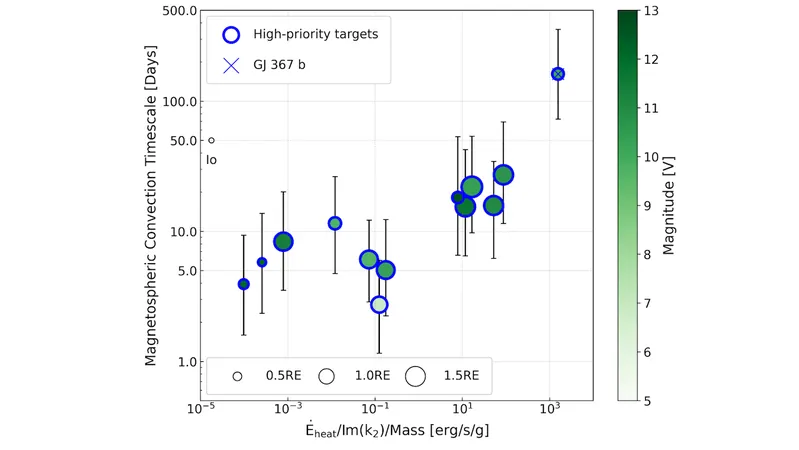
Unlocking the Secrets of Distant Worlds: How Volcanic Activity on Exoplanets Could Change Our Understanding of the Universe
2025-06-12
Author: Rajesh
Revolutionary Techniques to Study Exoplanets
A groundbreaking study has unveiled an innovative method for probing volcanic activity on distant exoplanets by analyzing their circumstellar plasma tori. This technique takes inspiration from the volcanic moon Io, extending its principles to theorize how similar phenomena occur on exoplanetary worlds.
The Science Behind Plasma Tori
Researchers propose that volcanic eruptions on exoplanets could generate plasma torii—massive rings of charged particles that orbit close to the planet, influenced by its magnetic field. The balance between how much material these volcanic events inject into space and how quickly it's expelled helps determine the mass of these tori.
Quantifying Volcanic Outgassing Rates
By studying the Alfvén surfaces of stars hosting planets, scientists can estimate how long these plasma tori last and their mass. This information is crucial as it allows for the quantification of volcanic outgassing rates of various elements detected within the torus, providing an unprecedented glimpse into the geological makeup of these far-off worlds.
A Window into Alien Geology
This relatively non-invasive approach offers insights into a planet's interior state—information traditionally gained only after a planet succumbs to tidal forces. Examples of such planets include those experiencing tidal heating, suggested to generate detectable plasma tori with outgassing rates nearing 1 ton per second, akin to Io's emissions!
A Call for Advanced Astronomical Tools
For this revolutionary technique to reach its full potential, advanced ultraviolet spectroscopy beyond Earth’s atmospheres is vital. Observations with enough resolution and sensitivity can identify the atomic lines in these circumstellar tori, ushering in a new era in exoplanetary research.
The GJ 367 System: A Case Study
A striking example is the GJ 367 system, where researchers model how a hypothetical plasma torus, formed by volcanic activity on GJ 367 b, would affect stellar spectra. By mapping the absorption lines of elements like carbon, oxygen, sulfur, sodium, and potassium, the research illustrates how a planet’s volcanic activity could enhance the detection of its atmospheric composition.
The implications of this study are monumental, as it paves the way for understanding the geology and atmospheres of planets orbiting distant stars—potentially bringing us closer to identifying habitable worlds in the cosmos.



 Brasil (PT)
Brasil (PT)
 Canada (EN)
Canada (EN)
 Chile (ES)
Chile (ES)
 Česko (CS)
Česko (CS)
 대한민국 (KO)
대한민국 (KO)
 España (ES)
España (ES)
 France (FR)
France (FR)
 Hong Kong (EN)
Hong Kong (EN)
 Italia (IT)
Italia (IT)
 日本 (JA)
日本 (JA)
 Magyarország (HU)
Magyarország (HU)
 Norge (NO)
Norge (NO)
 Polska (PL)
Polska (PL)
 Schweiz (DE)
Schweiz (DE)
 Singapore (EN)
Singapore (EN)
 Sverige (SV)
Sverige (SV)
 Suomi (FI)
Suomi (FI)
 Türkiye (TR)
Türkiye (TR)
 الإمارات العربية المتحدة (AR)
الإمارات العربية المتحدة (AR)